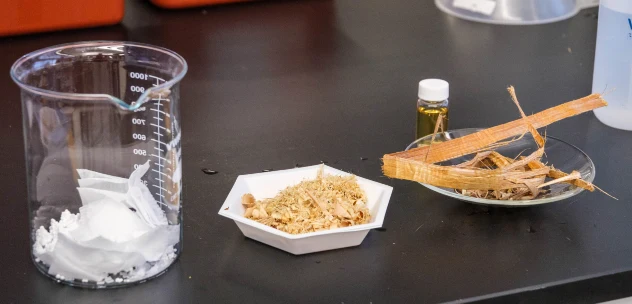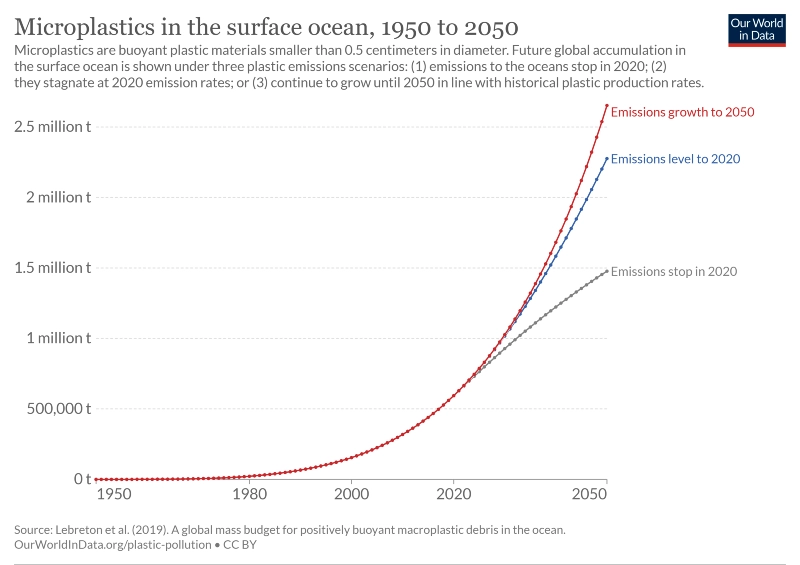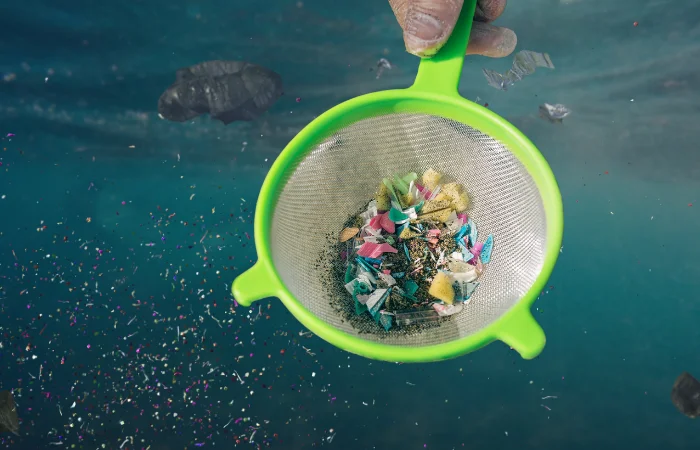Microplastic pollution, a looming environmental menace, might have met its match in an unexpected source: plants.
Researchers at the BioProducts Institute at the University of British Columbia (UBC) have unveiled an ingenious solution that could effectively trap up to 99.9% of microplastic particles present in water using an inventive combination of natural plant compounds and wood dust.
The innovative approach involves the infusion of tannins, natural plant compounds found in various fruits, into a layer of wood dust. This amalgamation creates a filter capable of capturing nearly all microplastic fragments suspended in water.
Although the experiment remains confined to the lab for now, the researchers are optimistic about the potential for easy and cost-effective scaling once the right industry partner is identified.
Dr. Orlando Rojas, the institute’s scientific director and the Canada Excellence Research Chair in Forest Bioproducts, highlighted the urgency of addressing microplastic pollution.

Research has indicated that microplastics, minuscule fragments arising from the disintegration of consumer goods and industrial waste, have seeped into tap water and are predicted to disperse over 10 billion tons of plastic waste into the environment by 2025.
Dr. Rojas stated, “There are microfibers from clothing, microbeads from cleansers and soaps, and foams and pellets from utensils, containers and packaging. By taking advantage of the different molecular interactions around tannic acids, our bioCap solution was able to remove virtually all of these different microplastic types.”
The distinctive aspect of this solution lies in its sustainable nature. Unlike traditional plastic filters, the bioCap filter employs renewable and biodegradable materials.
It leverages tannic acids sourced from plants, along with bark, wood, and leaf components, in conjunction with wood sawdust, a renewable forestry byproduct.
This combination offers a double advantage by effectively tackling microplastics while minimizing further environmental pollution.
The researchers focused on the efficacy of their method, termed “bioCap,” through an analysis of microplastic particles released from polypropylene tea bags.

The outcomes were remarkable, with the solution capturing between 95.2% and a staggering 99.9% of plastic particles, contingent upon the type of plastic.
Intriguingly, tests conducted on mouse models affirmed the prevention of microplastic accumulation within organs.
However, the complexity of the microplastic problem is evident.
Microplastics exhibit a diverse range of sizes, shapes, and electrical charges, making their complete capture a formidable task.
This groundbreaking solution emerges from a collaboration between UBC and Dr. Junling Guo from the Center of Biomass Materials and Nanointerfaces at Sichuan University in China.
The research also received contributions from Marina Mehling, a Ph.D. student at UBC’s department of chemical and biological engineering, and Dr. Tianyu Guo, a postdoctoral researcher at the BioProducts Institute.
Dr. Rojas, the driving force behind this innovative initiative, expressed the critical importance of sustainable approaches in combating the rising menace of microplastics.
More To Discover
- Climate Change Rolls Back Decades of Clean Air Progress in U.S., Study Reveals
- A Natural Biomaterial May Be The Answer To Avocado Longevity
- UC Davis Scientists Use Volcanic Rock to Capture Carbon in Dry Climates, Offering New Hope for Climate Action
- Fusion Milestone Achieved: Experiment Generates More Energy Than It Consumes
The multidisciplinary effort of the BioProducts Institute brings hope for a brighter, more environmentally friendly future, as they strive to counteract the pervasive challenges posed by these minute yet monumental plastic particles.
“Microplastics pose a growing threat to aquatic ecosystems and human health, demanding innovative solutions. We’re thrilled that the BioProducts Institute’s multidisciplinary collaboration has brought us closer to a sustainable approach to combat the challenges posed by these plastic particles,” said Dr. Rojas.



















